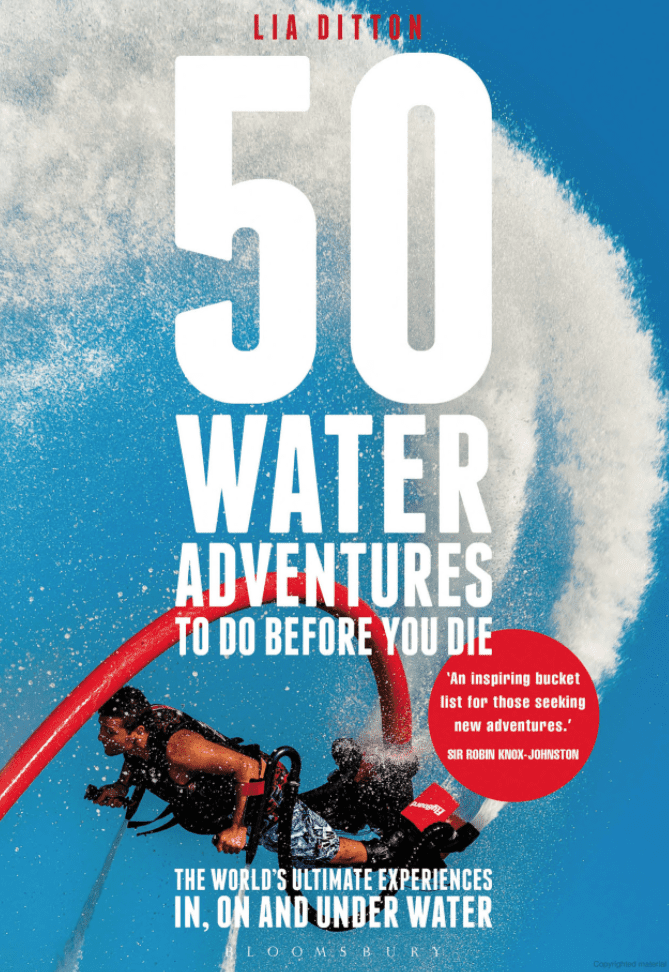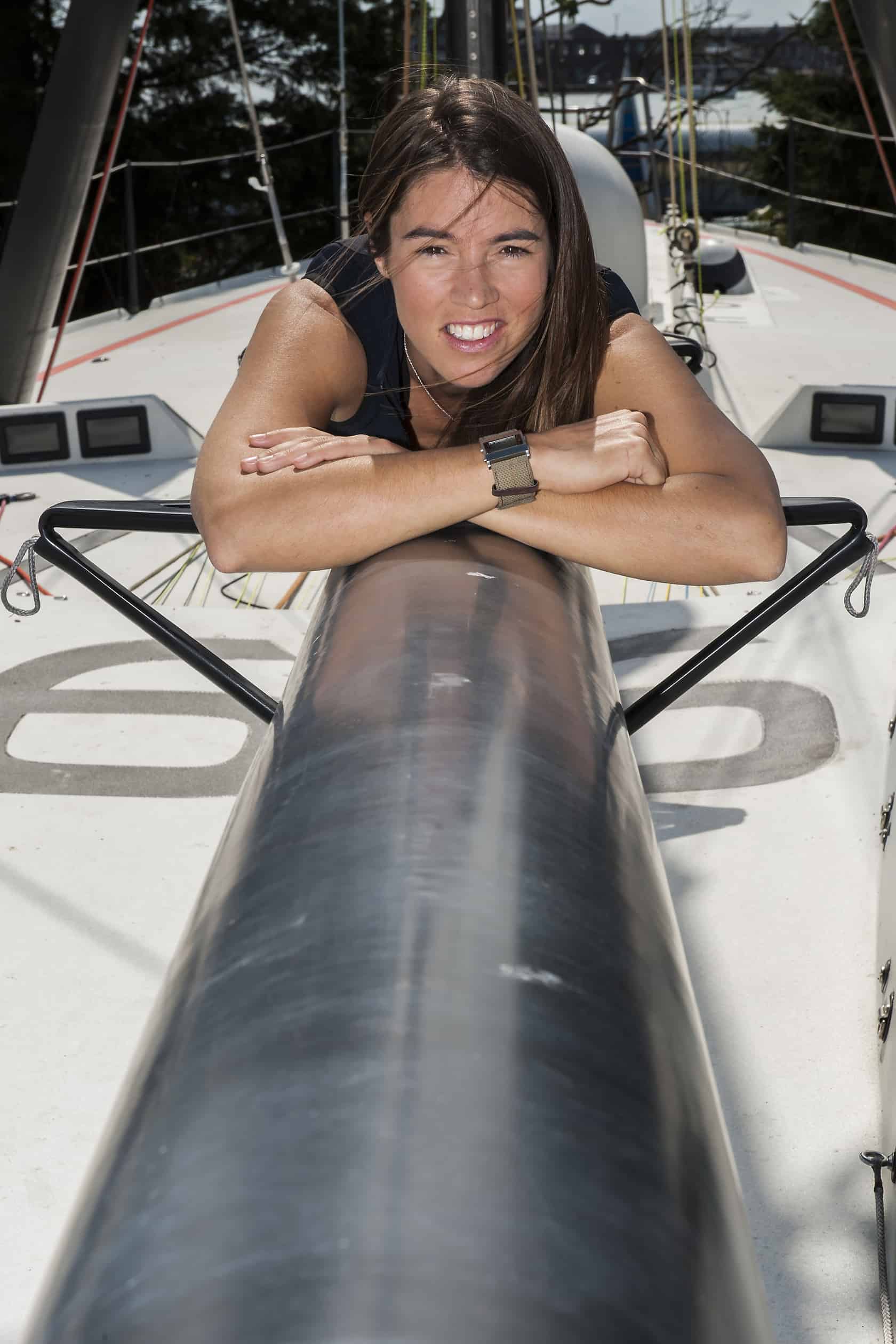“I don’t seek solitude but I am fascinated by it”, Lia Ditton.

Training in the San Francisco Bay Area.
Lia Ditton has rowed some 3000 nautical miles, crossed an ocean 15 times including 3 times alone. Lia also went to Chelsea College of Art in London, one of the most prestigious art schools in the world. For the past 16 years, Lia Ditton, sailor, artist, has worked as a captain on private yachts, traveling to remote destinations around the world. Now for a new challenge: rowing across the North Pacific ocean.
“ I am going to row across the North Pacific Ocean and to make art about the experience”.
Interview by Gaël Couturier.
"I’m going to row across the North Pacific. No woman has ever succeeded in doing this."
When? Early 2018. Until then, I am training in the San Francisco Bay Area. In January 2018, I will ship my boat to Yokohama, Japan, which is south of Tokyo. Then I’ll drive to Choshi, in the Chiba Prefecture and I’ll wait for a good weather window before setting off to row across the North Pacific to San Francisco, which is about 5500 nautical miles away (10186 km / 6329 miles, Ed.). To date, there have been 18 attempts to row the North Pacific solo. Two were successful, both by Frenchmen – Gérard d’Aboville in 1991 and Emmanuel Coindre in 2005.
I have not rowed across an ocean on my own, but I have rowed from the Canary Islands to Antigua: an island in the West Indies, Caribbean, with another person back in 2010 for the Woodvale Ocean Rowing Challenge. My rowing partner was an English detective inspector and it took us 74 days.
Our journey was 2500 nautical miles (4630 km / 2876 miles, Ed.) , but with wind and current it’s impossible to row directly from A to B and so we rowed some 3000 nautical miles (5556 km / 3452 miles, Ed.) in total.
I’ve sailed single-handed 3 times across the Atlantic. My first race was the OSTAR (single-handed transatlantic race) in the summer of 2005, in a 35 ft trimaran. It took me 28 days to cross. The race ran from Plymouth, in the southwest of England, to Newport, in the state of Rhode Island on the east coast of the USA, circa 3000 nautical miles (5600 km, 3452 miles). I finished 5th in my class and I was the youngest participant and only woman to finish the event. Next I raced France’s most celebrated single-handed transatlantic race: La Route du Rhum in November 2006, from northern France to Guadeloupe in the Caribbean- circa 3542 nautical miles (6560 km, 4076 miles).
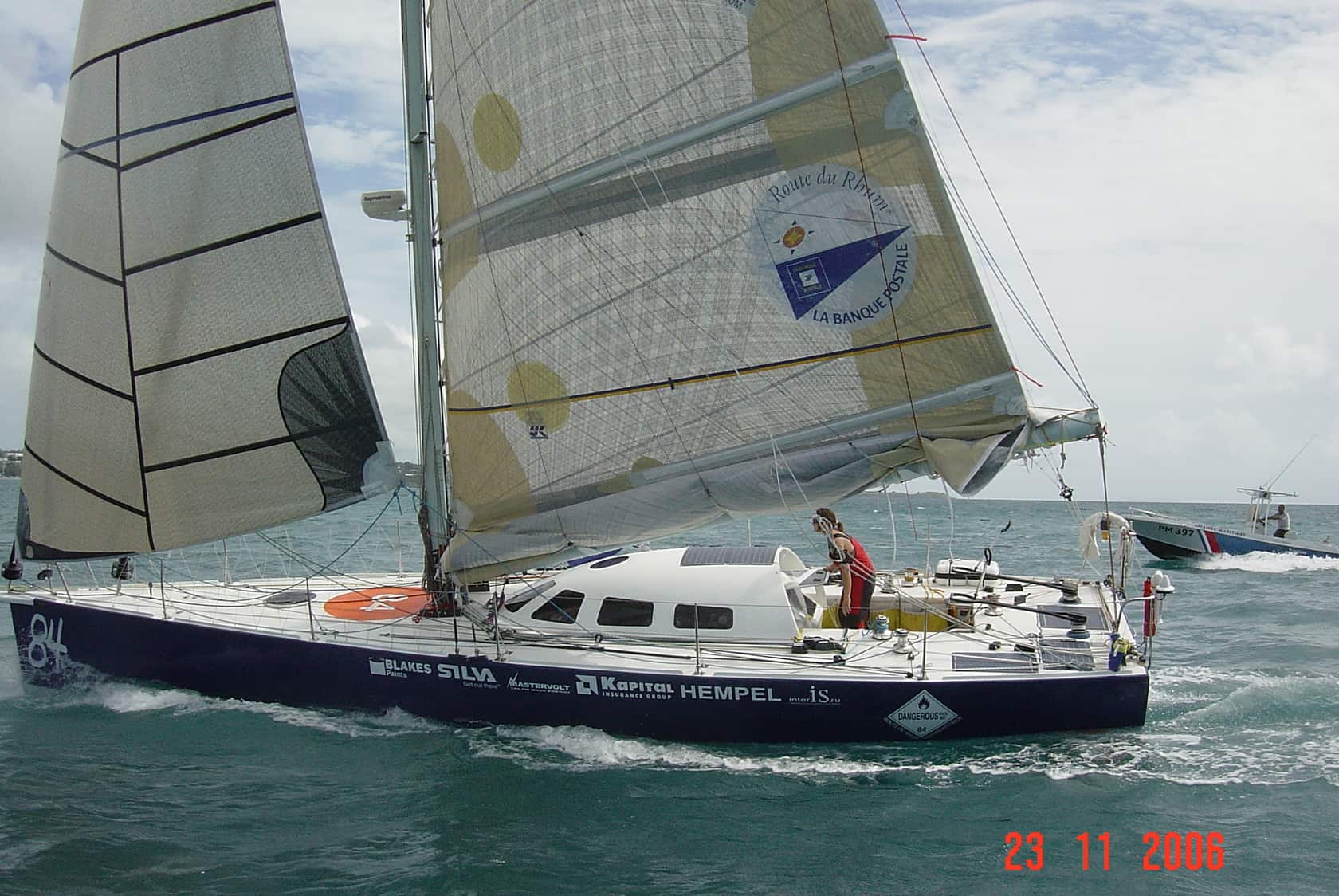
“I drove the boat through the night. I was supposed to keep the wheel for 5 minutes but I ended up driving it for 8 hours. Others thought we were going to die."
My passion has always been art, particularly sculpture.
I was born in southeast London and I lived in London until I was 9 years old. Then we moved to the countryside in Suffolk, which is about two hours northeast of London. I didn’t grow up racing dinghies. We had a family boat, but it was very small, 19 feet (5,8 m). My parents had a great spirit of adventure. We first sailed the boat round the east coast of England, then to France and then my parents just couldn’t stop! We went through the canals of France, sailed along the coast of France to Corsica, round Sardinia and Sicily. The boat was designed to sit on the mud flats and be sailed in the tidal waters of England. For 6 weeks every summer, the four of us were on the boat. My brother refused to get out of bed, my mother was seasick and, well, that’s how I learned to sail. I learned to navigate because I wanted to get to the next destination as quickly as possible. But there was also a lot of freedom with that experience.
I have always been passionate about art. At 12 years old, I dreamt of representing the UK at the Venice Biennale, in Italy. I loved materials, and making with my hands, but at Chelsea College of Art at that time nobody really made anything. It was all about the idea of making. It was the era of the artist Damien Hirst, whose philosophy is that you pay other people to make the work for you. Damien Hirst put a shark in a tank of formaldehyde and called it art (The Physical Impossibility of Death in the Mind of Someone Living, 1991, Ed.) and the work was widely celebrated. I was so disillusioned.

“I wanted to sail. I wanted to feel the wind in my hair."
I left England to travel India.
The Chelsea College of Art director of Sculpture told me to go somewhere, like Greece for two weeks. Instead I chose India. I wanted to carve stone and go back to the roots of sculpture. I didn’t know at the time – I was only 20 years old – that it isn’t easy to go and make sculpture in India. India is chaotic and dirty and overpopulated. I chose India because I sensed it was going to be extreme. In India I learned resilience. I learned that I would get sick, sure, but that I’ll also get better, discover new things and survive: everything in balance. I travelled on to Thailand and at a centre outside Bangkok I took a Vipassana meditation course. My travelling friend at the time, a New Yorker named Pauline wanted to do it. Through Vipassna I learned determination. “Patience and persistence and you are bound to be successful” is the great mantra from Vipassana. The meditation leader said it 10 times a day for 10 days. It’s a powerful philosophy to embody when you are 21 years old.
This mantra is still behind everything I do.
In Thailand, I stumbled upon a yacht race in Phuket, the Phuket King’s Cup regatta. The race organisers were calling for volunteers. After the regatta, there were boats looking for crew to return to Australia, New Zealand, Cape Town or Europe – to me that was an adventure not to be missed. I didn’t want to sail directly back to Europe, so I chose a cruising boat instead, one that was planning to stop at lots of countries along the way. It took us 5 months to get to Turkey.

I knew I couldn’t go back to London and be a poor struggling artist making sculpture.
To me the world was now one big art gallery. Many sailors told me that sailing up the Red Sea wasn’t real sailing and that I needed to go to the Caribbean. They said the wind blows there everyday, consistently, and that’s real sailing. I was 21 at the time and if enough people tell you should go to the Caribbean, you start thinking ‘heck, I should go to the Caribbean!’ So I went to the Caribbean.
I never thought that I would visit the Caribbean in my lifetime. It seemed out of range, a place that cost thousands of dollars just to get to – like Hawaii – I never thought in my lifetime that I would go there either. It was too far, too expensive. It was what rich people did. But I went, with no plan, and a hundred dollars to my name!
For 4-5 months, I managed to hitch rides on cruising boats and then I found myself in North America, sailing up to Newport, Rhode Island. Newport Harbor is full of boats, hundreds of them. I was in heaven! By then, I had learned that there was a marine industry and that people would pay me money to work on boats.
I wanted to sail. I wanted to feel the wind in my hair. I stumbled into racing and that gave me the speed and the sensation of really sailing. After a while people paid me money to race and I became a professional sailor. I did that for 4 years.
I didn’t finish my university degree and I wasn’t making art. In my soul, art was missing. Finally, I had the courage to say: “OK, I need to go back and finish my art degree. Only, now I’m going to do it on my terms: I’m going to enter the single-handed OSTAR race across the Atlantic and make art about it”. And so I did.
After the OSTAR in 2005, I installed my trimaran in the courtyard of the Chelsea College of Art in London, next to the Tate Britain Gallery and I re-enacted my experience of crossing the Atlantic as a performance art work and for the same number of days as it took me to race cross the Atlantic – 28 days – I lived on my boat without getting off.
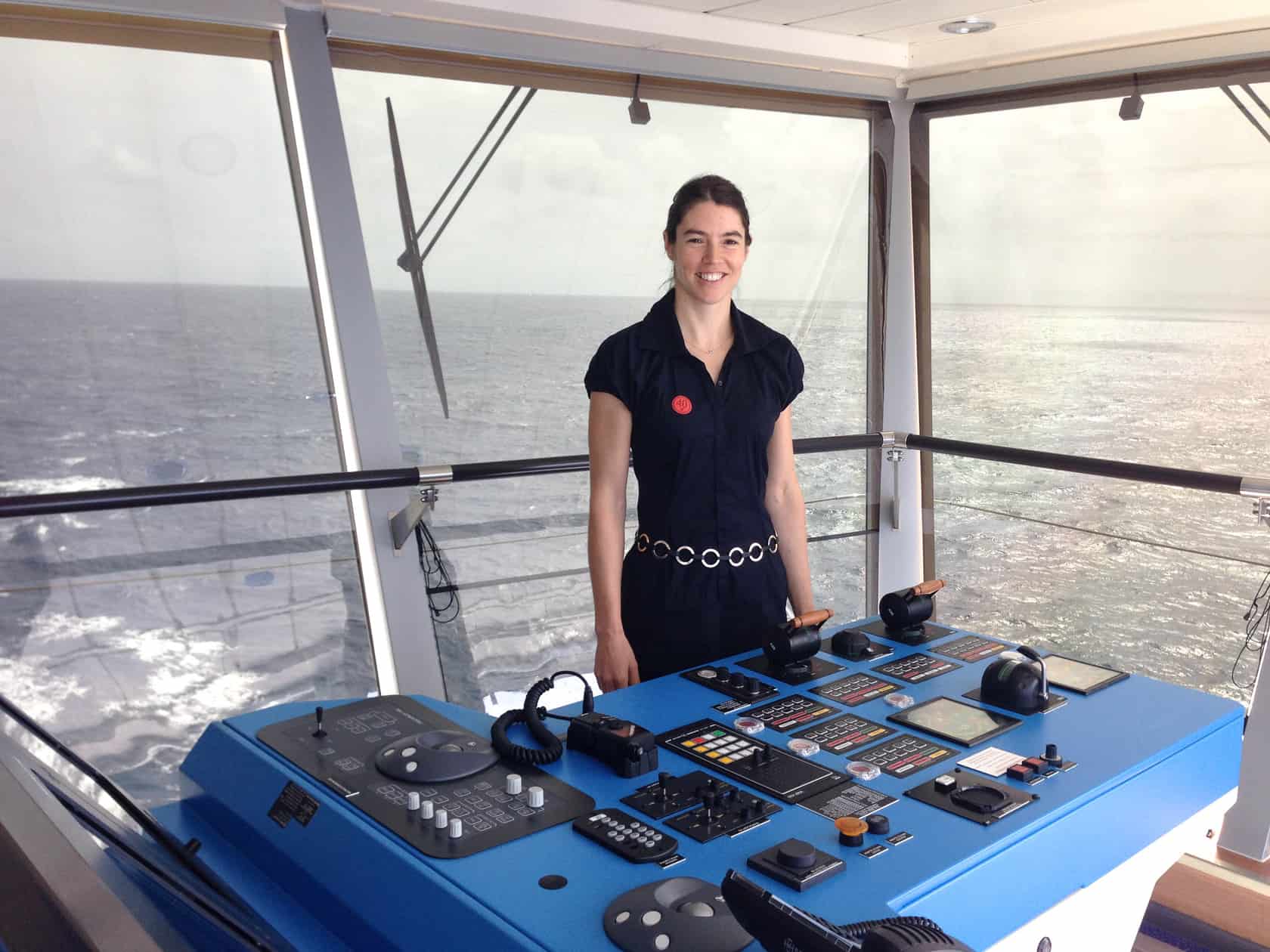
It was harder to put the boat in central London than it was to sail it across the Atlantic because of the authorization required. I spoke to over a thousand people when I sat on my boat in London and we talked about every aspect of what it meant to sail across an ocean alone.
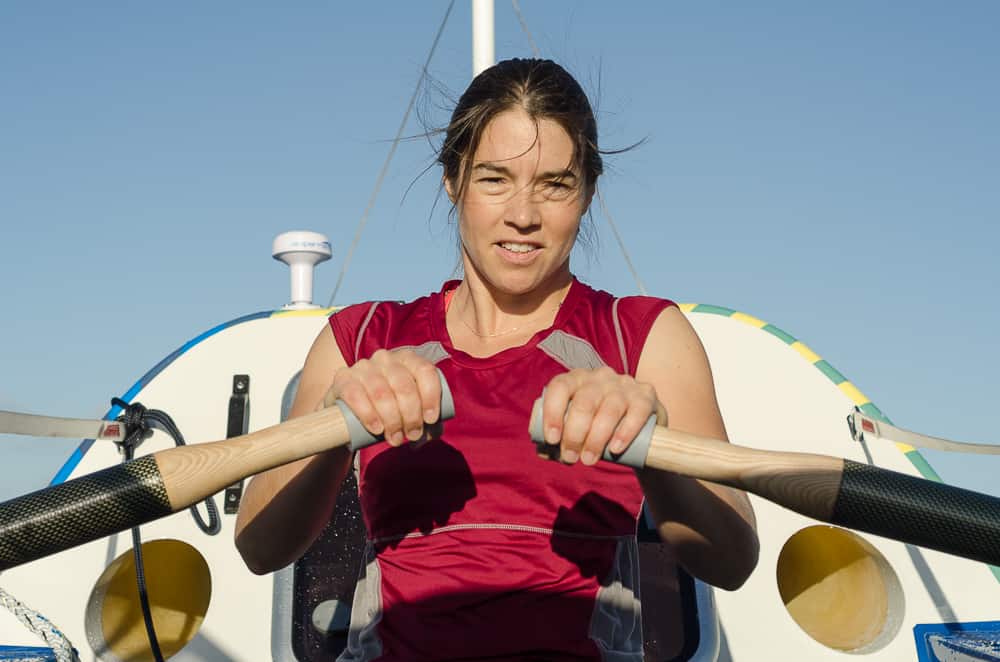
'Patience and persistence and you are bound to be successful, bound to be successful' is the mantra of Vipassna, the meditation course Lia completed aged 21.
“A day at sea without writing is a day lost.” This is what I say to myself. A day I don’t write about is truly like a day that didn’t happen. Writing is very important to me. Even when I deliver boats as a job, I write, everyday. I know it’s not competitive to sit and write for 45 minutes, and you cannot possibly sail at 100% when you do so. That’s always been my compromise.
My writing began at the end of the first year at art school. I discovered that if a picture says a thousand words then a thousand words paints a pretty powerful picture. The reason I write is because I want to share my journey. I also write for my mother. Wait, I think the audience is entirely my mother! I am not quite sure she reads everything on my blog but it’s just that I think of my mother as the audience. If you think about hundreds of thousands of people reading what you write you might change what or how you write. But if you think about writing for just one person that you love, you end up writing a very intimate account.
When I sailed theRoute du Rhum in October 2006, I wrote a diary on the inside skin of the boat itself. Some media mocked me as this conceptual artist that somehow found her way into sailing. But on the other hand, there were all these people, the public, who wanted to go inside the boat and look at the diary. The rest of the media and the sponsors loved it.
People ask me how I’ll have the energy to write everyday and row at the same time, but the reality is that when you row across an ocean, you have a lot of time to think – 12 to 16 hours a day. Then when it’s time to write, the content is well formed and it just spills onto the page. And if my laptop does not work, I have a backup system for sending my blogs. Sharing the experience through writing everyday is as important to me as succeeding in the row. Maintaining a mental equilibrium and routine for the body is going to be key to my success. Writing is part of that routine. It gives me a great joy to know that others can follow what I’m experiencing. Through the writing, you get to appreciate the best bits.
I saw my first trimaran when I reached Newport in 2002. It was a radical looking boat. It looked like a spaceship on water. I had never seen a boat like this before. The guys on board were going to sail the boat back to England for a race called the OSTAR. I asked if they needed crew.. They said no, but I helped them get ready nonetheless and the day before they left, the captain invited me to join them. We set out across the Atlantic too late in the season. We experienced storm after storm, 8 low-pressure systems in 12 days. Then along came Hurricane Kyle. The boat had a crack. We were in the most extreme conditions you can imagine, but the artist part of my brain found it totally stimulating. The boat was in the air, like it was hovering. The sensation was so strange. When I went on deck, the waves were loud and rumbling. The water was swirling white and jade as each wave was ripped down from underneath by the weight of its own mass. It was stunningly beautiful. There was so much energy in the atmosphere.
I had no concept of the danger of the situation we were in. I remember on the crest of a wave we could see for miles and miles – rolls and rolls of water marching across the horizon. I was supposed to take the wheel for 5 minutes but I ended up driving for 8 hours. After that, I was fascinated by what it would have been like to experience all that alone. Could I do it? Did I have what it took? I wasn’t sure.
For about 6 weeks, I was quite traumatized by the experience. I kept taking hotter and hotter baths and falling asleep in the bath. And the crew laughed at me saying that I had survived a hurricane, but was going to drown in the bath. The hot water was comforting.
After the OSTAR in the summer of 2005, I set off once again to cross the Atlantic, alone. A week in, Hurricane Katrina started brewing in the South Atlantic. For my safety, a meteorologists, directed me to an area that had no wind, at all. So I parked there for 10 days, literally parked. The boat didn’t move. It was so beautiful how the sky reflected on the water. You don’t go there as a sailor because there’s never any wind there. But the ocean came alive! Small tropical fish nibbled at the algae on the bottom of the boat and a whale tried to mate with the middle hull. The horny whale was making a dance around the boat. I hadn’t thought up to that point of what was going on underneath the surface.
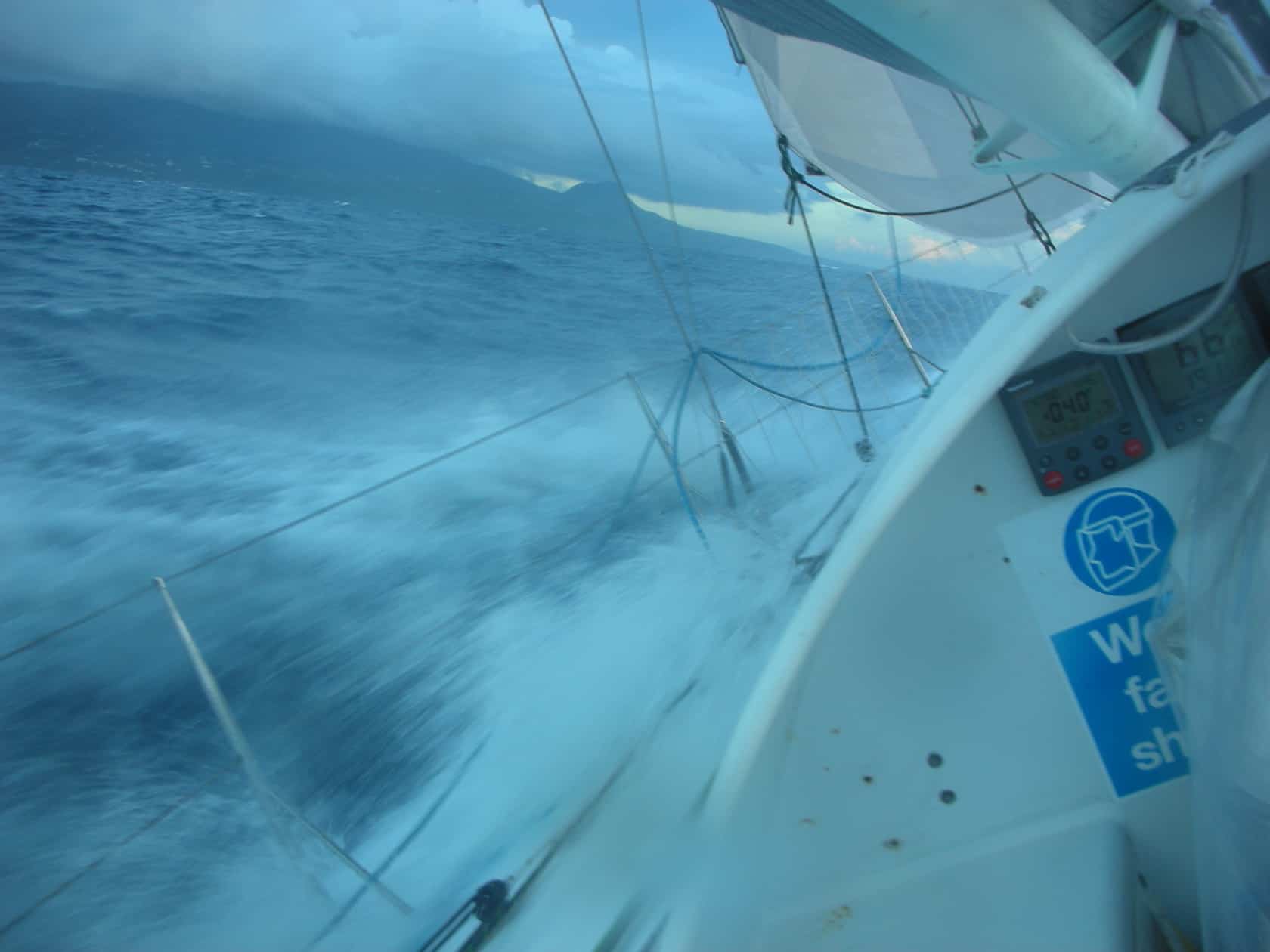
“I became a professional sailor. People paid me money to race boats, but always in my soul, art was missing."
In a storm, a sailing boat is more at risk than a rowing boat because it has appendages that can break – a mast, sails, keel and hardware. A rowing boat has none of these. You need to position the boat in a way that it rides in the wave train, between two wave crests. You need to keep the boat going down the wave and not turning sideways – that is key. My boat is built with a layer of Kevlar on the for strength outside. Gérard d’Aboville in 1991 rolled 38 times in total.
Ocean rowing boats are designed to roll. I will get tumbled inside, but I have a seat belt so I will strap myself in. We’ll roll-test the boat in the spring. We’ll also roll-test the boat with me inside, so that I learn what the experience is like.
The main danger for me in this crossing is being caught with the hatch open, because if the cabin floods, chances are that the boat will not roll back round again. Then I’m in the water and in big trouble. In the build up to a storm, I basically have to decide if I’m going to be in the boat or on deck, one or the other. There will be a tracker and I’ll have an EPIRB (Emergency Position Indicating Radio Beacon). Activating the beacon is my last resort if I need rescuing.
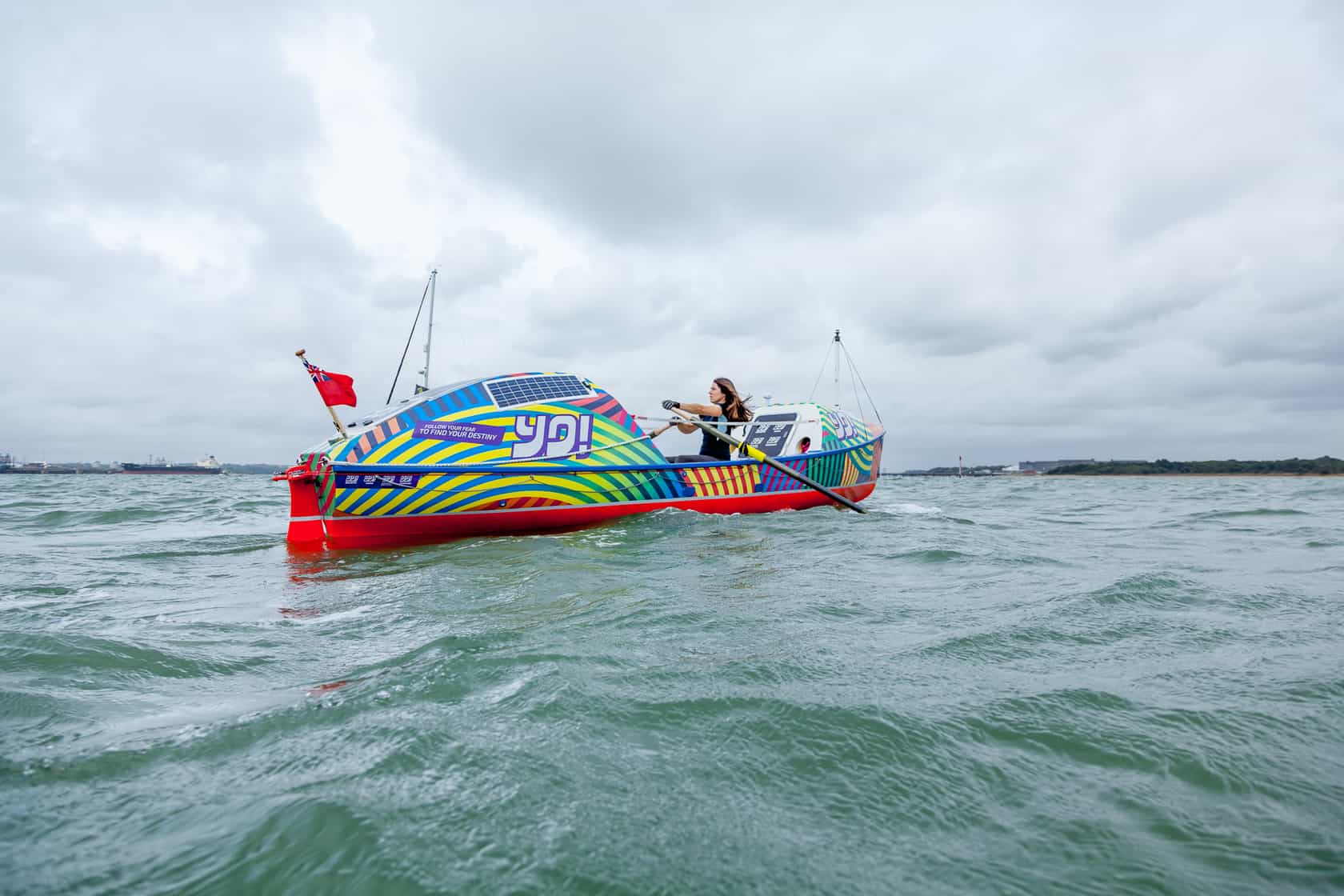
"The mission behind the YO! Row is to inspire people worldwide to pursue their own big dream."
Mes romantiques
Thomas Coville, is a French sailor and definitely one of my heroes (Thomas Coville has sailed round-the-world 7 times, mostly alone, Ed.). He’s like super-human to me. He sails the fastest largest boats on the planet with sails that are so heavy I can’t even move them. But he’s also an artist. He may not think of himself as an artist but the way he writes is very philosophical, very spiritual. Gérard D’aboville is another hero of mine. Gérard D’aboville’s book, Alone, has the same kind of depth as Touching the void, the 1988 book by Joe Simpson (Gérard D’aboville is the first man to row across two oceans alone, the Atlantic in 1980 and the Pacific in 1991, Ed.). D’Aboville famously said that he did not conquer the Pacific, the Pacific allowed him to cross.
There’s also Bernard Moitessier, another French sailor who decided not to pass the finish line while he was winning the first around the world yacht race ‘The Golden Globe’.
My specialization on boats is multihulls, the fast trimarans, and I like that you also don’t need to be physically beefy to drive boat well. It’s all technique. I kind of found my groove there.
Today, between projects, I deliver boats from A to B or I captain boats for 6-months to a year. Or I am the engineer onboard. I have also written two books . My books 50 Water Adventures To Do Before You Die – The World’s Ultimate Experiences In, On And Under Water (Bloomsbury Publishing, 2014, Ed.) is now published in English and German.
“Sharing the experience with people through writing everyday on the boat is as important to me as succeeding in the row. Consistency of mind and routine for the body are going to be the key to my success. Writing is part of the routine."
My favorite place to live has so far been the island of Majorca, Spain.
Mallorca has a good combination of mountains and sea. They call it the gateway to Europe because most boats stop there after crossing the Atlantic. Friends wash in and out like the tide and to someone like me who does not really belong anywhere – in the sense of owning a house somewhere – it was nice to have friends always coming and going. When I was living in Mallorca, the first year, I rented a house, where the living room was a cave carved into the side of the mountain. The back garden of the house was the Sierra de Tramontana, a mountain range, where I hiked for two hours everyday. And then the second year I rented an 800 year-old windmill in the middle of the island, which had 4ft thick walls. It was like living in a castle. To complete that, I need to live in a lighthouse! There was a lot to like about living in Mallorca. The only downside of Mallorca is that I can’t really earn money there. When I was writing books and working for the Marathon Des Sables it didn’t matter where I lived.
Up until last week, I had a storage unit in every continent. My things are kind of scattered around the world. I can see myself living in Polynesia somewhere. I will likely buy a boat at some point and the boat will be my home.
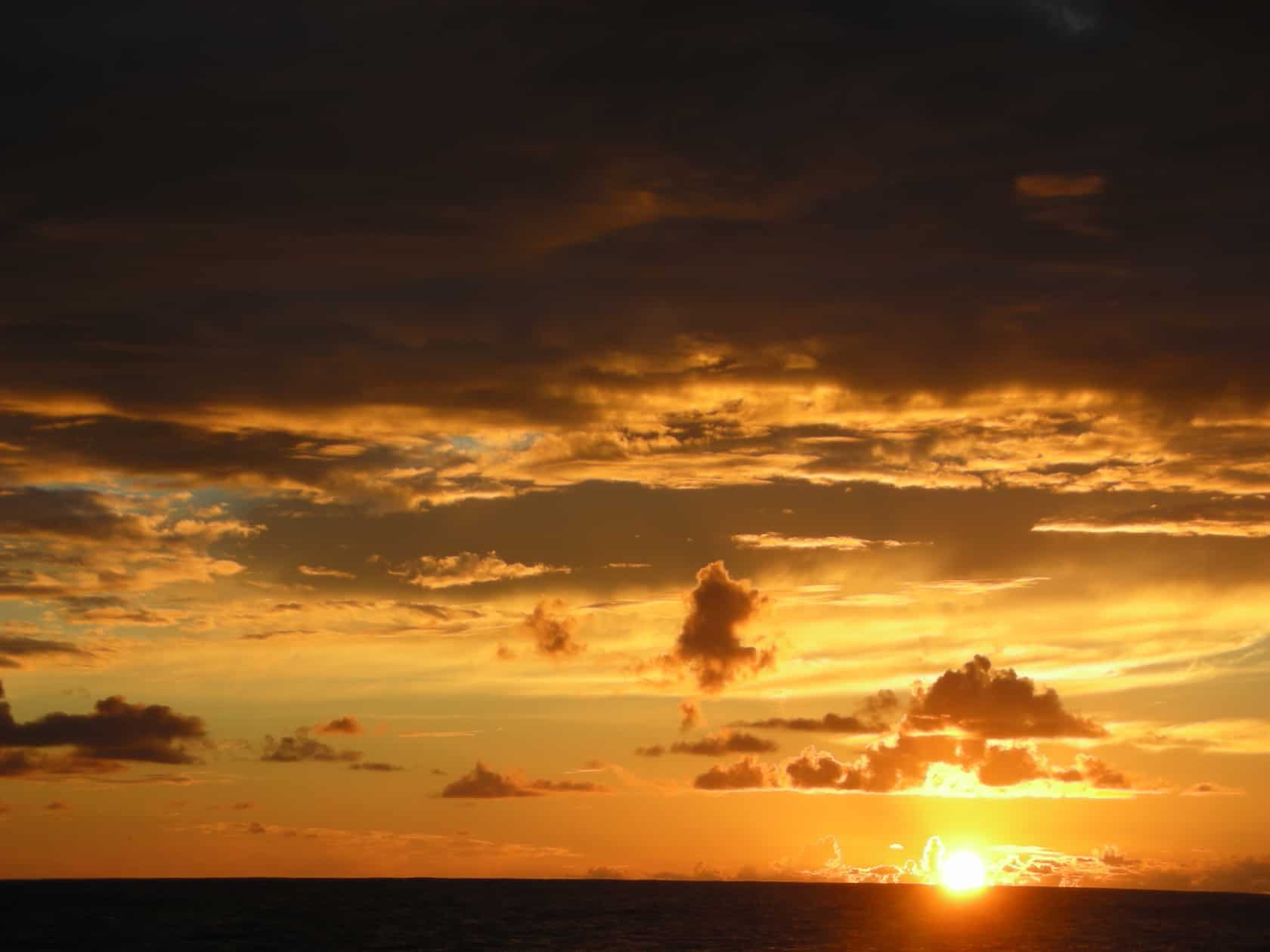
“The boat was almost in the air, like it was hovering. The sensation was so strange. When I went on deck, the water was loud and rumbling. You could see the water was white and jade as each wave was being ripped down from underneath by the weight of its own mass. It was beautiful. There was so much energy in the atmosphere."
When I was at art school I had to explain to my teachers why I wanted to sail across the Atlantic Ocean alone…
The surprise that came out of the experience is that I was not lonely in the way that people expected me to be lonely. It wasn’t that I did not miss people. I was just very busy sailing the boat. I was lonely when everything was perfect, when I was not hungry, when I was not tired, when there were beautiful sunsets, sunrises and nights full of stars. It was loneliness in the sense of “I wish someone was here to enjoy this with me.”
I don’t think I am uneasy with people but I think I am more comfortable surrounded by people like myself, people who do extreme things. I can be myself with these people.
I don’t seek solitude but I am fascinated by it. I am fascinated by what happens in the mind and how enhanced your perception of things becomes, like sensitivity to sound. A change in the environment around you wakes you up and you don’t know why. For example in the OSTAR race, I was asleep and I woke up. I went on deck and I saw a ship right near me. I didn’t have radar on the boat so that was a pretty good sensitivity to have. Something about my environment had changed and I could feel it. It woke me up. I think every ship that passed me by I woke up for. So yeah, I’m fascinated by the concept of solitude but I’m not destined for a life as a monk! I’m not seeking solitude. There’s a book called A book of silence by Sara Maitland, an English author, where she looks at every type of solitude. She liked quiet religiously. And I think I like that also. I love silence. Silence is so achingly beautiful. But there’s nothing silent at sea. It’s like people’s perception of Antarctica. All that ice, it looks silent but it is really loud. It is cracking and breaking, squeaking. The ocean is rumbling and slushy and there’s absolutely nothing silent about it at all. But it is silent compared to modern life.
The only thing about doing extreme things is that it does alienate you from other people. If you spend 6 months at home living your life you might be the same person at the beginning and end, but if you spend 6 months crossing an ocean, you will likely be changed by the experience. I hang out with older people as a result, people who have had more life experience.
An ocean experience puts things in perspective and you end up not stressing about this and that because you know it’s not worth it. At other times you think: what is the point? That’s a good reason why a lot of extreme adventurers launch into planning their next challenge almost immediately: otherwise they lose focus. It almost becomes an existentialist crisis. We need these extremes in order to feel alive – that’s the danger.
Rowing takes such a big toll on your body. After 4 to 6 month at sea, my body may take a year or two to fully recover. Six months of rowing across the Pacific will be the equivalent of 6 years of exercising, if you were to exercise for 1 hour per day, every day of the year.
“But there’s nothing silent at sea. It’s like people’s perception of Antarctica. All that ice, it look silent but it is really loud. It is cracking and breaking, squeaking. The ocean is rumbling and slushy and there’s absolutely nothing silent about it at all. But it is compared to modern life."
Follow Lia’s adventure and support her cross Pacific Row here: https://www.yorow.org


